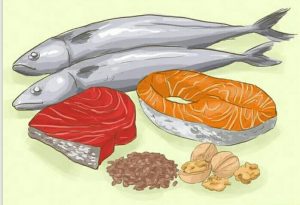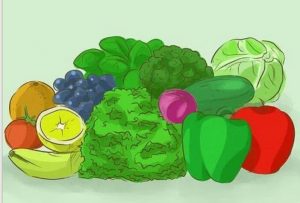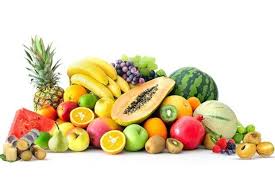Being healthy involves more than eating an occasional salad or going for a short walk once every few weeks, but while you’ll need to put in some effort, your health is well worth it. To live a healthy lifestyle, consistently choose healthy foods, fit more exercise and physical activity into your daily routine, and practice good hygiene. You’ll also need to avoid unhealthy habits, like fad dieting and neglecting sleep. Making lifestyle improvements may require some gradual adjustment, but improved health is readily accessible once you commit to it.
1.Choosing Healthy Foods:Choose food that contain minimal amounts of unhealthy fats. Unhealthy fats include both trans fats and saturated fats. These fats will raise your LDL cholesterol, and elevated LDL cholesterol often correlates with an increased risk for heart disease.
Foods that are high in trans fats include foods made with “partially hydrogenated oils,” such as shortening or margarine. Baked goods, fried foods, frozen pizza, and other highly processed foods often contain trans fats.
Foods that are high in saturated fats include pizza, cheese, red meat, and full-fat dairy products.Coconut oil is also high in saturated fat, but may also increase good cholesterol, so it’s okay to use in moderation.
2.Eat healthy fats in moderation. Poly-unsaturated, mono-unsaturated and omega-3 fats are all good lifestyle choices.These good fats lower your LDL cholesterol and raise your HDL cholesterol, which correlates with decreased risk for heart disease.
Choose oils such as olive, canola, soy, peanut, sunflower, and corn oil.

Fish are high in omega-3 fatty acids. Choose fish including salmon, tuna, trout, mackerel, sardines, and herring. You can also get omega-3s from plant sources, like flaxseed, plant oils, and nuts and seeds, although your body doesn’t process the fats from these as effectively.
3.Low sugar and carbohydrates.Select foods that are low in both sugar and highly refined carbohydrates. Minimize your consumption of sweets, soft drinks, sugary fruit juices, and white bread. Choose whole fruits, freshly-squeezed juices, andwhole grain bread instead.
4.Eat a variety of different whole foods instead of eating processed foods. Whole foods offer a balance of healthy carbohydrates, proteins, fats, and other nutrients.
Eat fruits and vegetables for their high vitamin and mineral content. Try to eat plenty of fresh fruit and vegetables, rather than canned ones that often contain added sugar or salt.
Choose lean meat, beans and tofu for their protein content.
Enjoy whole grains such as whole wheat bread, whole wheat pasta, brown rice and quinoa.
Eat low-fat dairy products. Skim milk and reduced fat cheeses will reduce your fat intake while ensuring that you receive enough calcium.

5.Incorporate organic foods. Shop at a natural food store or buy food from your local farmer’s market. Organic foods are not more nutritious for you, but they don’t contain as much pesticide residue or food additives. They are generally more eco-friendly, too.
If price is a factor for you, consider buying only certain foods organic, such as apples, berries, stone fruits (peaches, nectarines, etc.), grapes, celery, bell peppers, greens, potatoes, and lettuce. These foods often have much higher pesticide use than other produce when grown conventionally.
🔥122 Views






1 Comment
Treatment of gout - NAMAT blog
(August 8, 2018 - 10:35 pm)Adjust your diet